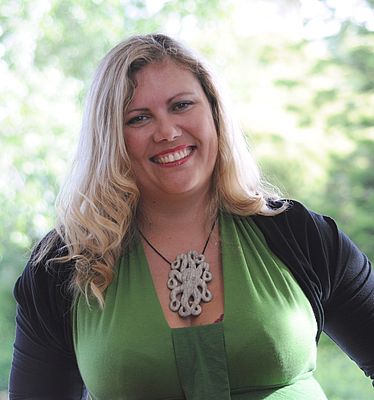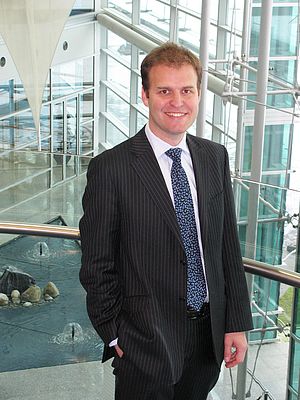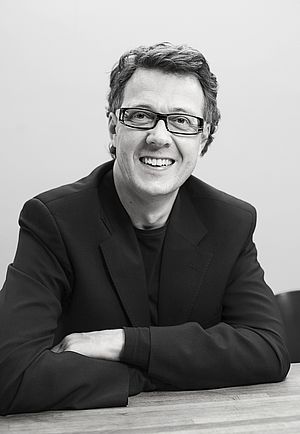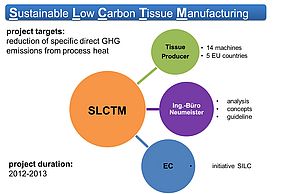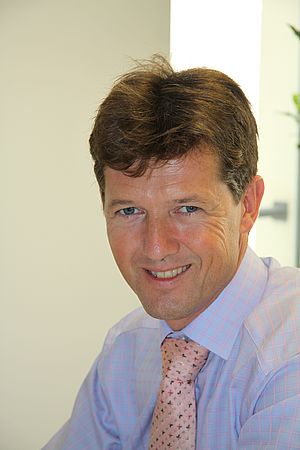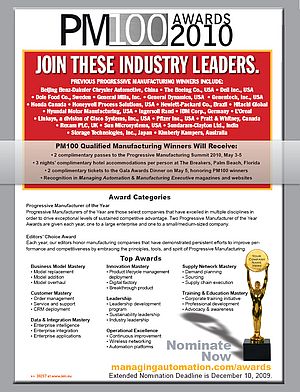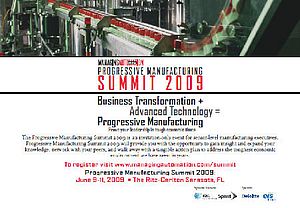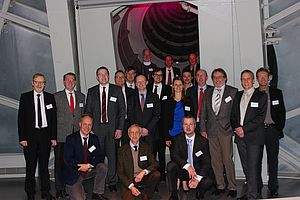Thanks to the fantastic networking nature of social media, particularly twitter, I had the great fortune to be invited to the recent Congress on Industrial Energy Recovery in Berlin (October 24-25, 2012). I have long followed EEIP on twitter, and was impressed with their work in industrial energy efficiency, and their outstanding networking and PR skills.
I am leading a new Task under the International Energy Agency’s Demand Side Management Implementing Agreement (www.ieadsm.org), Task XXIV called ‘Closing the Loop - Behaviour Change in DSM: From Theory to Practice’. A big part of this Task is to utilise the ‘social nature’ of new media to bring together an international expert group on behaviour change in DSM, to enable and foster collaboration and engagement, and to widely disseminate our findings, recommendations and outcomes. As behaviour change is basically a ‘human’ issue, and thus by definition a very social one, the so-called new, or social media lends itself perfectly as an important tool for our work.
What is particularly heartening, is that even though Dusan Jakovjlevic, head of EEIP, joked that I should come and visit ‘the dark side’ of industrial energy efficiency, I have seen many more similarities and overlaps with our Task, than differences whilst I attended the Congress. The ‘human’ aspect, especially around issues of how to change behaviours in CEOs, staff, investors, policymakers (national and international) and customers, was mentioned repeatedly during the two days.
Erik Gudbjerg, head of EEIPProcess, hit it on the nail when he was asked during the last panel, what the one thing would be that he would do to improve industrial energy efficiency. He said ‘Change behaviours, it is the most important issue we need to solve’. When asked how he would do that, he said by telling better stories of how less wasteful practices can lead to monetary savings, process and energy efficiencies and better publicity and corporate responsibility. This exchange perfectly outlines the premise for our Task, which looks into the four main themes of transport, building retrofits and smart metering, in both the household and SME sectors.
Our objective is to bring together international experts from all behavioural disciplines and bridge the divide between theory and practice, by providing both a ‘brokerage’ and a ‘translation service’ between the researchers who understand human behaviour via the use of various theoretical models and frameworks, and the supposed end users of their research, who try to affect behaviour change in energy end user practices, via various policies, pilots and programme interventions in the ‘real world’.
EEIP can be an important partner in this aspect, both because of their large network and their networking skills, but also because no real change can take place without involving industry partners and convincing them of the large, and cheaply-accessible potential in the so-called ‘behavioural wedge’. The main response I frequently hear from industry representatives when talking about energy efficiency or behaviour change, is that energy constitutes such a small part of their overall costs, it is usually not worth to expand significant efforts in this area - especially not over others, such as eg marketing or innovation efforts.
My response would be that behavioural change in a company is a form of ‘social innovation’, one that can lead to an incredible array of co-benefits, such as increased productivity, staff and customer loyalty, improved PR, carbon credits, fulfilment of EU and national energy directives and targets, better load management leading to decreased need for energy generation, energy security, monetary savings, decreased pollution and health benefits. It often does not require large capital investment, and rather relies on staff knowledge and know-how of improving wasteful practices and processes. Of course, a large percentage of energy savings can also be achieved with installing energy efficient technologies, energy recovery or renewable generation of energy. For the best example of how such a different approach can lead to a fundamental shift to the better in a giant, global company, is to watch Ray Anderson, CEO of Interface Carpets in the excellent movie ‘So right, so smart’.
And if one should still question the need and potential for greater energy efficiency and renewable energy investment, one should look at the RENT project that one of the world’s top re-insurers Munich Re is investing in.
I really look forward to visiting Finnfjord, one of the EEIP partners showcased at this Congress, at their plant in Norway next spring to interview and film their outstanding energy efficiency achievements as a case study for our IEA Task on SMEs. I also hope to stay in close touch with Dusan, and many of the other EEIP partners and collaborators. Thankfully, this will be rather easy with the instant engagement offered by twitter and other social media tools.
To me, industry is definitely not the ‘dark side’, rather the shining knight of a brighter future where CEOs, investors, staff and customers are similarly buying in to improving energy practices in order to reap the many benefits for our economy, environment and society. If you are interested to contact me, or find out more about our IEA Task, please email me at drsea@orcon.net.nz, or tweet me @DrSeaRotmann.
Dr Sea Rotmann´s main project is being Operating Agent for Task XXIV on Behaviour Change for the IEA's DSM Implementing Agreement (www.ieadsm.org). She previously worked at the New Zealand Energy Efficiency and Conservation Authority as Principal Scientist and has been the NZ member of the IEA's Expert Group for R&D Priority Setting and Evaluation for the last 5 years. She releases a weekly newsletter called ‘Behaviour Change & Energy News’
International Energy Agency -
Behavioural Change & Energy Efficiency
- by TIM Global Media BV
- November 16, 2012
- 4155 views


